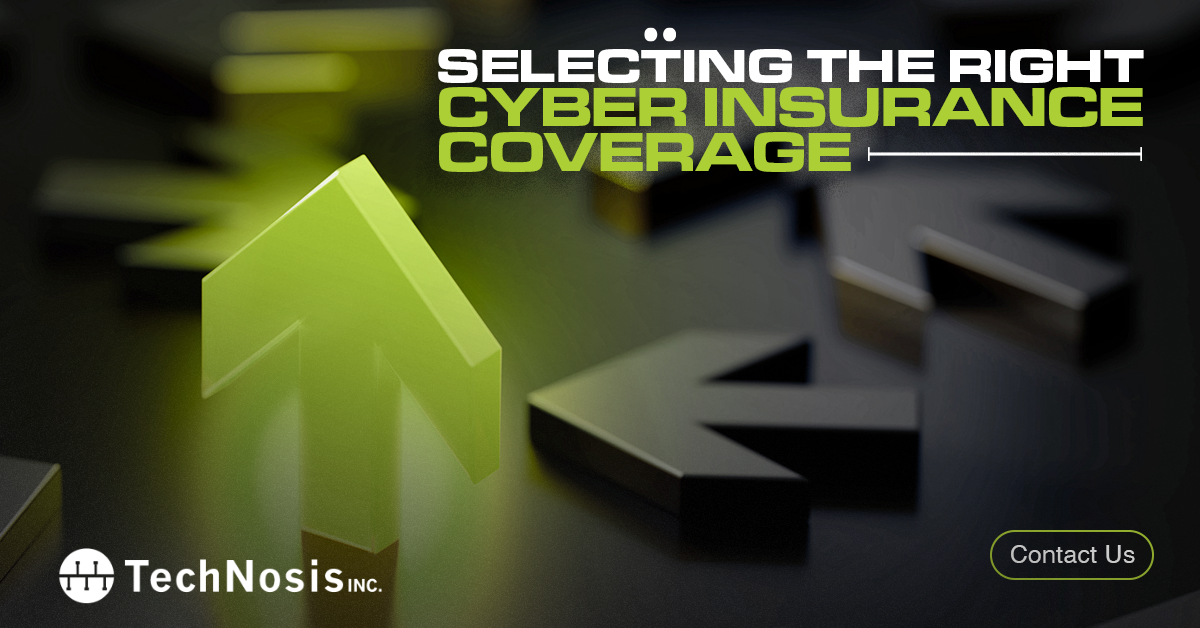Safeguarding Your Business: Navigating the World of Cyber Insurance
In an era dominated by evolving cybersecurity threats, staying ahead of the curve is imperative for your small business. While embracing the latest technologies is crucial, having a robust cybersecurity strategy is incomplete without the invisible shield of cyber liability insurance. However, to ensure your business is getting the full benefit of cyber insurance, it is critical to understand what type of policy to select.
Before we talk about how to choose the right cyber insurance, let's break down the essentials: first-party coverage and third-party coverage.
First-party coverage vs. third-party coverage
Every business with a digital footprint needs cyber liability insurance. To help businesses quickly respond and recover from data breaches, insurance providers have developed two types of cyber liability insurance – first-party coverage and third-party coverage.
Here are some ways they differ:
First-party coverage:
Protecting Directly: Offers protection to the insured business against direct losses.
Costs Covered: Addresses direct costs such as revenue loss, forensic investigations, data restoration, PR, and customer notification services.
Reputation Management: Aims to restore the brand image through expenses related to hiring public relations firms.
Third-party coverage:
Legal Safeguard: Primarily focused on handling legal aspects and defending against claims.
Liability Coverage: Covers cyber-related liabilities, including data breaches, privacy violations, and defamation.
Scope: Extends protection to affected third parties like customers and business partners.
Key Considerations When Selecting Cyber Insurance:
Coverage
In the ever-evolving cyber landscape, having robust coverage isn't a luxury – it's a smart defense strategy. Cyber threats continue to ramp up each year, and your business could face a data breach or cyberattack at any time. It's not just about having coverage; it's about ensuring your policy is finely tuned to address the specific risks your business faces.
Limits
Evaluate the policy to understand the coverage limits. Your chosen policy should be practical, capable of handling the potential financial fallout of a cyber incident. This means not just focusing on direct costs but also considering legal fees, data recovery, and the often overlooked expense of production downtime.
Exclusions
Your cybersecurity is only as strong as your policy's fine print. Go through the policy outlines with a discerning eye to uncover any exclusions that might expose your business. Knowing the limitations within your policy isn't just advisable; it's a practical step toward comprehensive protection.
Incident response
Make sure that the policy has provisions for developing and implementing a cyber incident response plan tailored to suit your business. Without a well-defined response plan, you won’t be able to effectively respond to a cyber incident.
Price
Selecting a policy isn't just about cost; it's a practical investment in your business's resilience. Although opting for the most affordable option can be tempting, ensuring that the coverage you choose is best suited for your business needs is crucial.
Reputation
In the world of cybersecurity, trust is everything.. Look for an insurer with a solid track record of positive customer feedback choose a company known for prompt claims settlement – a reliable indicator of support when you need it.
Build a resilient future
Choosing the right cyber liability insurance can be complex, but claiming it when needed can be even more challenging. That's where a dedicated managed IT service provider like TechNosis comes in. Our services are not only tailored to protect against cybersecurity incidents, but also to recover quickly in the event of a breach.
We can help you improve your chances of securing coverage. Reach out today, and let's build a resilient future together.

